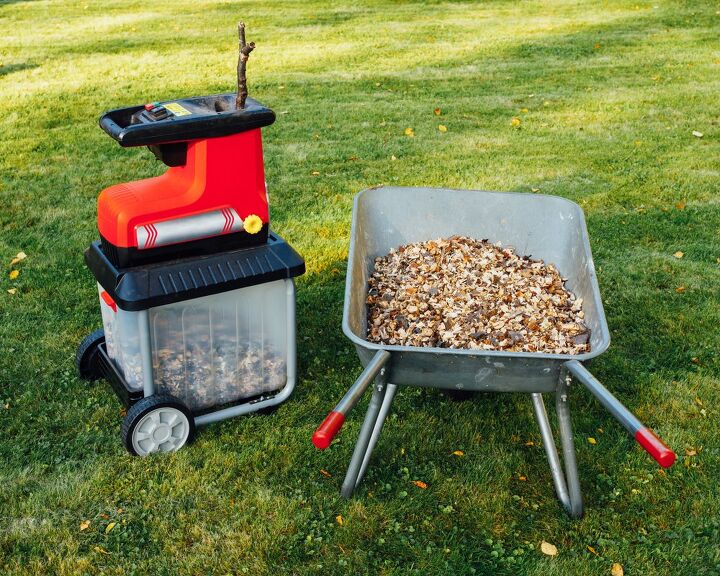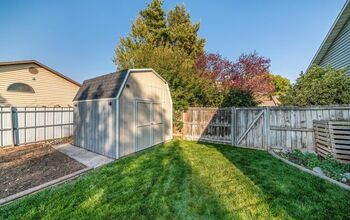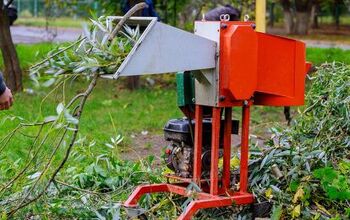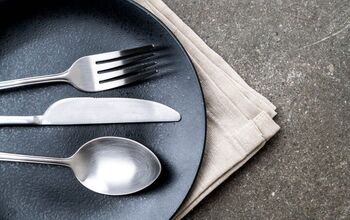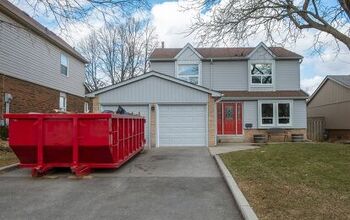What Can You Put In A Wood Chipper? (Find Out Now!)

Having a big yard is a great deal of work but can be very rewarding. If you own a wood chipper, it is possible to not only reduce yard waste from branches, brush, and grass, but you can create your own mulch or compost, which can reduce your carbon footprint and help you save money. Many different organic matters are perfectly acceptable to put through a wood chipper.
Most residential wood chippers can handle organic wood from trees and shrubs, as long as the branch diameter does not exceed 3 inches. Paper, cardboard, and wet wood can be put through a chipper with caution. Never put bamboo, pressure-treated lumber, rubber, or OSB through a wood chipper.
Many people don’t realize that some unconventional items can go through the wood chipper as long as you use caution. Cardboard and paper can easily go through the wood chipper and work even better if your wood chipper has a shred function. Cardboard and paper can be used for compost or animal bedding. In addition, wet wood and yard waste can go through the chipper, although it may be necessary to use slightly smaller wood pieces to prevent the chipper from clogging or jamming.
Do You Need Landscaping Services?
Get free, zero-commitment quotes from pro contractors near you.

What Can I Put in a Wood Chipper?
As the name implies, wood is always safe to run through a wood chipper. Most wood chippers will be able to handle small branches and tree limbs. In addition, a wood chipper will also be able to process:
- Yard Debris
- Leaves
- Brush
Can I Put Wet Wood in a Chipper?
As long as you put wood that has come from a tree, like branches and brush into the chipper, wet would be fine. Always avoid placing lumber through a chipper. With damp wood, there is a tendency for the wood to move through the machine more slowly, so it may be necessary to reduce the diameter of wood you feed through the chipper.
Can Paper and Cardboard Go In a Wood Chipper?
Many people do not realize that a small amount of paper is perfectly fine to put through a wood chipper. Shredding paper or newspaper through a chipper is a wonderful way to dispose of confidential documents or create natural bedding for rodent cages. Many chipper machines will have a shredding feature that is specifically intended to help shred paper. Use caution when feeding paper through a non-shredding chipper. The fine material can cause the blades to clog and jam.
Can Cardboard Go Through a Wood Chipper?
Just like paper, cardboard is perfectly acceptable for a wood chipper. Always be sure to only run small pieces through the chipper at any given time. The wood chipper has sharp blades that spin very quickly, so large amounts can easily clog the chipper. Shredded cardboard is an excellent material to add to a compost bin.
What Should I Avoid?
While wood chippers are wonderful tools that can help speed up yard work and create reusable substances, certain items cannot go through the wood chipper. These items include:
- Bamboo – Bamboo is a very hardwood that can easily bend, deform, or damage the blades in your wood chipper.
- Rubber – Putting rubber in your wood chipper, including old tires, will damage the chipper. Tires usually have steel belts in their frame, which will destroy a chipper. Plus, rubber can easily jam the machine, which can cause the device to overheat and damage the engine.
- Pressure-Treated Lumber – This specialized lumber contains certain chemicals that are harmful if they are inhaled. Chipping pressure-treated lumber can release these toxins into the air. Plus, pressure-treated lumber is usually harder, which could damage your chipper.
- OSB – While a wood chipper can certainly handle an OSB if it is cut into small strips, this is simply a waste of time and energy. OSB could easily be repurposed or broken down manually without running a large machine.
What Type of Wood Chipper Is Right for My Needs?
There are multiple types of wood chippers that are designed for different uses for the average homeowner. Some of the most common wood chippers include:
- Drum Chipper – This chipper features a horizontal drum. While this type of chipper can chip larger loads, it uses a great deal of energy and produces irregular chip sizes.
- Disk Chipper – Compared to a drum chipper, the disk chipper uses a vertical disk to cut wood at an angle. This chipper is energy efficient and fast, but very fibrous materials will slow the machine.
- Screw Chipper – The screw chipper uses a large screw that rotates to pull wood through the chipper. Use this chipper type if you want uniform chips. If you want to change the size of the chips, you’ll have to stop the machine and change the blade.
Do You Need Landscaping Services?
Get free, zero-commitment quotes from pro contractors near you.

Related Questions
How much wood can a residential wood chipper handle?
Although it may be tempting to use a residential wood chipper to help clean up downed trees throughout your yard and property, there are limitations to what you will be able to chip with a conventional residential chipper available to homeowners. Most chippers have a chute where you can load material into the machine. Commonly sold chipper machines will be able to handle tree limbs that measure up to 3 inches in diameter.
How can I mulch wood without a chipper?
Creating organic mulch from your yard waste is a great way to limit your impact on the earth and save money. If you do not own a residential wood chipper, you may still be able to create your own mulch. A tree grinder, sometimes referred to as a stump cutter, is a powerful tool that can help to chip wood.Using a high speed motor and disk with teeth, the tool works to grind away branches, stumps, and roots into tiny chips. Often, these tools can be rented from a hardware store, so there is no need to purchase a tree grinder.

We are a team of passionate homeowners, home improvement pros, and DIY enthusiasts who enjoy sharing home improvement, housekeeping, decorating, and more with other homeowners! Whether you're looking for a step-by-step guide on fixing an appliance or the cost of installing a fence, we've here to help.
More by Upgraded Home Team



